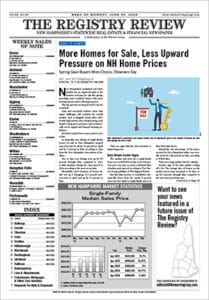Residential real estate volume at the parent company of Massachusetts-based HarborOne Bank slowed for the fourth consecutive time in the second quarter.
Total residential real estate volume was slightly over $756 million, down about $6 million from the linked quarter and $15 million year-over-year. The former credit union has loan offices in Manchester and Portsmouth.
“Despite the contraction in residential mortgage demand, our earnings have been consistently strong,” HarborOne CEO James Blake said in a statement. “Our investment in the commercial loan growth strategy has provided margin improvement and positions us as a significant commercial lender in New England.”
The bank has indeed flipped a switch as its mortgage business has continued to erode.
Total loans grew more than $200 million year-over-year, powered by the bank’s new focus on commercial real estate. During the quarter, the bank also opened a new loan production office in Boston that provides a wide range of commercial solutions including commercial real estate financing, working capital, term debt for equipment and leaseholds and cash management products.
The company reported net income of $3.1 million, or $0.10 per basic and diluted share, for the second quarter of 2018, compared to $3.2 million, or $0.10 per basic and diluted share, for the same quarter last year. Net interest income for the quarter was $20.9 million up $2.7 million from the second quarter of last year. The margin remained steady at 3.25 percent on a linked quarter basis and is up 23 basis points year-over-year.
Total assets at the company reached $2.88 billion, up from $2.63 billion one year ago. Total deposits reached over $2.2 billion, up almost $210 million from one year ago.
The bank incurred $524,000 in expenses associated with its planned acquisition of Warwick, Rhode Island-based Coastway Bank, which is expected to be completed sometime this year.
The company recorded a provision for loan losses of $886,000 for the second quarter, up more than $400,000 from the second quarter of 2017. Nonperforming assets as a percentage of total assets were 0.60 percent at June 30, 2018, down from 0.86 percent one year prior.

